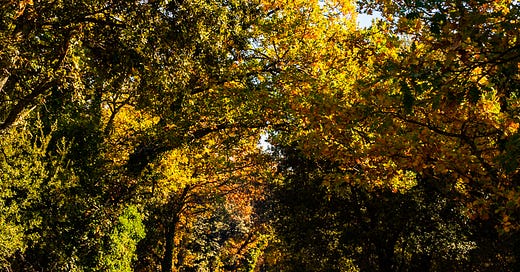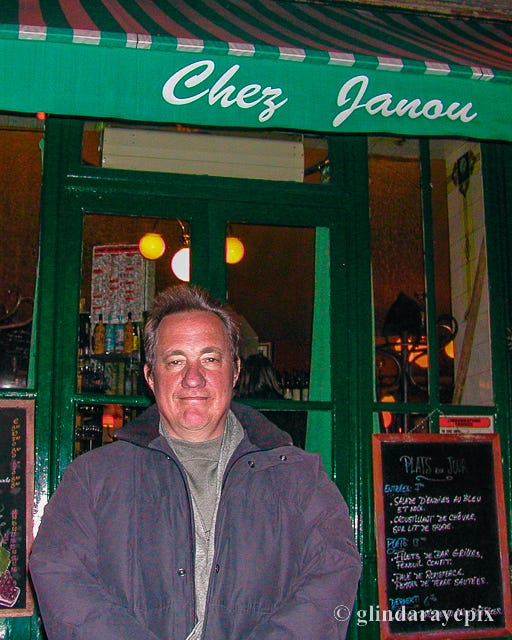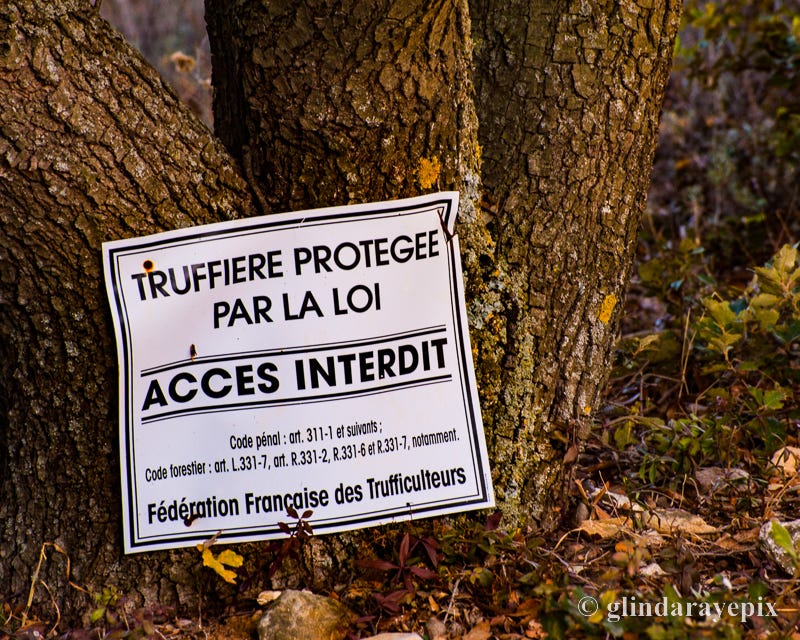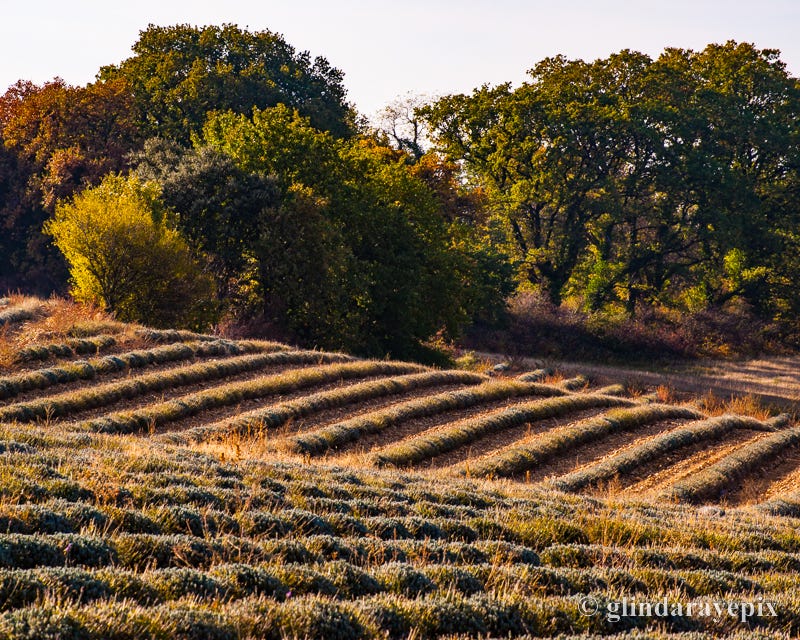This story starts out on a bitterly cold November evening in the ancient Marais quarter of Paris, at our favorite Northern Italian restaurant on the planet, Enoteca. Actually, it probably starts out a few hours earlier, around the corner at our favorite absinthe bistro on the planet, Chez Janou. The latter is renowned for its tiny horseshoe bar and the expert Provençal bartenders who can identify and recommend every one of their 53 styles of absinthe—so we might not be entirely sure about the bitter cold that evening, but vividly recall the rest of it.
We've never come close to a bad meal at Enoteca—a highly unusual circumstance in the mom-and-pop style of restaurants we typically patronize in Paris, where nearly everyone suffers an occasional off-night, and you just have to roll with the punches. But that evening, the chef decided to celebrate truffle season with fresh truffles in every dish on the menu—from the carpaccio to the tagliatelle, to the veal chop, and even the fresh ice cream.
At that point in our lifelong culinary journey, we knew truffles mainly by reputation. What we didn't know was that 95% of the truffle dishes we'd tasted were a certified rip-off. If you don't spot the thin black or white slices on your plate—if the dish is flavored with "truffle oil"—then you're nearly always consuming cheap olive oil flavored with the synthetic chemical 2,4-dithiapentane.
If that isn't appetizing enough, consider that 2,4-dithiapentane is also known as the dimethyl dithioacetal of formaldehyde. And if you still haven’t lost your appetite, 2,4-dithiapentane is the odor that overwhelms your nostrils in halitosis, smelly feet, and some forms of flatulence.
Yum!
So that evening, our entirely authentic (and wildly expensive) dinner at Enoteca, even with hours of Chez Janou's absinthe in our bloodstreams, came as a revelation—one of those meals in your gastronomic life that divides the BE from the AE (Before and After Enoteca). As of that night, we still had a few weeks of vacation left and nothing planned, so our mission became clear—to thoroughly research the subject of truffles and to chase the weird and elusive tubers all the way to their origins.
There's a scene in the movie Goodfellas, where the Paul Sorvino godfather takes forever to slice a garlic clove with a razor blade into tiny, translucent sheets (since he's in prison, he naturally has the time). No one would blame you for slicing your truffles that way (in or out of prison), because the genuine article comes in at more than $300 per pound. So one way to guess that you're buying the real thing comes when your French grocer uses three keys and a secret password to unlock the caviar-pâté-truffle cabinet.
Why so expensive? Because human beings have never quite found a way to standardize the harvesting of the tuber, a distant relative of the common mushroom. Truffles grow in random clumps a few centimeters underground, in the roots of oak and hazelnut trees, both wild and cultivated. Theoretically, they can be found anywhere on earth, but the three dominant regions are Italian Piedmont for white truffles and Périgord (just outside Bordeaux) and upper Provence for the black, French version. In the 19th century, these regions exported truffles of both colors, but then World War I killed too many farmers, World War II destroyed too many forests, and suddenly, truffle-harvesting became a rare and disappearing art.
It might come as a surprise, considering how they usually live, but female pigs have one of the most acute senses of smell in the animal kingdom. Add in the fact that the scent of raw truffles is indistinguishable from the sex phenome of boar saliva, and for centuries, these females have proved remarkably enthusiastic at sniffing out the underground fungi. The only issue is that these same very smart pigs excel at wolfing down the buried treasure before the farmer can pry it away from them. So much so that, in 1985, Italy banned pigs altogether in favor of dogs—who don't particularly care for the taste, but can be trained from puppyhood to follow its scent.
On that allegedly cold November evening at Enoteca, we'd already thought about following in Thomas Jefferson's steps when he took a rickety three-day carriage ride to Tain-l'Hermitage, south of Lyon, to augment his wine collection. Tain and Châteauneuf-du-Pape bookend a hilly wine region in southeast France that boasts some of the country's best "undiscovered" wines—up-and-coming AOCs like Gigondas and Vacqueyras. So we decided to stock up on obscure wines, chase down the black truffles of the Vaucluse, and then head to Marseille for Bouillabaisse.
As we mentioned, sometimes in traveling, you just have to roll with the punches. And it turned out that Enoteca had been celebrating the start of the Italian truffle season—the French season, where we were headed, wouldn't open for another couple of weeks. The bad news: We'd miss the boisterous open-air markets where the farmers convene to sell their harvests. We'd also miss the latest and greatest truffle specials in the local restaurants. The good news: No one would mind us wandering around the plantations themselves, sniffing and photographing the pregnant, photogenic oaks.
And so we spent a week wine-shopping and puttering around Richerenches, Carpentras, and Grignon, the three scenic villages at the heart of the French truffle industry. With the lavender and fruit tree harvests just in, the air was pungent with a constantly evolving aroma. The truffle forests were unfenced, so the only limit on our meanderings was the size of our tires and the ruts on the dirt roads. Farmers—who would probably shoo us out of the way in another month—glanced up from the repairs they were working on, but otherwise ignored the invasion.
In that sleepy calm before the harvesting storm, the biggest challenge was to find an open restaurant for an edible lunch. So we were walking around Grignan, getting used to the idea of kebabs at the local Turkish grill, when we passed a rusty cast iron gate into a disaster of wildly overgrown weeds. Through the mess, we thought we spotted a glass greenhouse with uniformed young women walking back and forth. A push of the gate, and we crawled through the jungle to find the back door to a thoroughly elegant atrium restaurant with exactly one two-top available.
At the next table, a bride-to-be and her mother and aunts (we guessed) were being served an endless variety of Nouvelle Cuisine tidbits. When we discreetly enquired of the maître d', he explained that we were looking at an eight-course tasting menu that the chef had developed for brides who were planning their receptions. Naturally, that was exactly what we were looking for—more or less anyway—so we spent the next three hours in the longest, most elaborate, most delicious, and yes, most expensive, lunch we'd ever eaten.
But here, in the heart of truffle country, out of season and in the typically purist French manner, not one iota of truffle appeared on our plates. So we just had to roll with that punch straight out of the restaurant and into a very long and happy afternoon nap.













Ah, this is another piece to share with my son, a chef at a French-Italian restaurant in Charleston, SC. BTW, he loved your piece on pasta.
If you are coming through North Carolina, please let me know. I live near Chapel Hill in a 55+ community that Californians think is a steal!